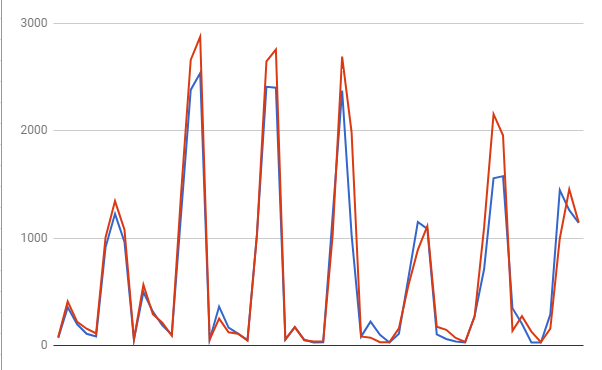recompiled wrf with normal earth values and i'm going to rerun the above sim and compare them at 7 days
i'm probably going to have to do another run where i just change the radius of the planet and see if anything changes, cause i'm not sure if geogrid knows what to do with different sized planets (and it might be the only thing that knows how to deal with them)
here's a comparison of the 168hr output from the normal earth vs the earth with pavala characteristics simulations

they're surprisingly similar, but the things i changed seem to work...
here's some output from a point near/over visalia, CA of the planetary boundary layer height: (blue is earth, red is "pavala", the run is 7 days)

as you can see, the planetary boundary layer is higher on the planet with the lower gravity, which you would expect because the lower gravity causes the atmosphere to have a larger scale height
and i checked that changing the radius works (or does something at least) by running a sim with all earth characteristics except a pavala-sized radius
so now i figure... most of the differences in pavala won't be weather, but climate (as a result of lower insolation, different axial tilt, and different year length)
although after looking through all the model constants and determining what most of them are, there's one thing i didn't set to simulate the pavala-like earth, the angular velocity of the planet, which affects the coriolis parameter and thus might change the nature of the cyclonic (and anticyclonic) systems on the synoptic scale
another thing that will change the weather a lot is if the landmasses are different, so i just edited the input file i've been using to have no land anywhere, both to check the feasibility of adding pavala's land data and also to see how much different land masses affect the weather
so yeah, 7 day ocean planet sim coming in the morning